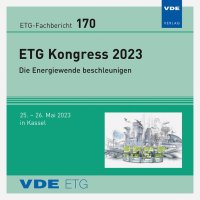Potential Contributions of Loads and Storages to Inertia: A Qualita-tive and Quantitative Feasibility Study
Konferenz: ETG Kongress 2023 - ETG-Fachtagung
25.05.2023-26.05.2023 in Kassel, Germany
Tagungsband: ETG-Fb. 170: ETG Kongress 2023
Seiten: 7Sprache: EnglischTyp: PDF
Autoren:
Schittek, Walter (Steinbeis Transfer Center Renewable Energy Systems, Kassel, Germany)
Massmann, Janek; Hennig, Tobias (Amprion GmbH, Netz- und Systemanalysen, Dortmund, Germany)
Stock, David Sebastian (Fraunhofer Institute for Energy Economics and Energy System Technology, Kassel, Germany)
Braun, Martin (Fraunhofer Institute for Energy Economics and Energy System Technology, Kassel, Germany & Steinbeis Transfer Center Renewable Energy Systems, Kassel, Germany & University of Kassel, Department of Electrical Engineering and Computer Science, e²n, Kassel, Germany)
Inhalt:
The inertia of a power system balances suddenly occurring active-power imbalances from the very first moment. Today, this is done primarily by the stored kinetic energy from rotating masses of synchronous generators. By 2035, the share of inverter-based generation units will increase significantly. As a result, periods during which only relatively small rotating masses are directly coupled to the grid will become more frequent and longer. At the same time, increased trades of electricity in Europe lead to higher power transmission distances, which significantly increase potential active-power imbalances during possible system-split events and thus increase the need for inertia in the interconnected system. The following work is based on scenario B 2035 of the German Netzentwicklungsplan Strom 2035 (Grid Development Plan Electricity 2035), version 2021, 2nd draft. An hourly resolved market simulation of the Continental-European power system for 2035 has been created. In a first step, points in time with high power flows over lines considered for system-split events but with low share of synchronous generation and thus little inertia are identified, which consequently show the highest demand for additional inertia. In order to meet the system requirements for inertia, the potential contributions from loads are investigated. The basic technical possibilities of the loads and their total installed capacity are taken into account. The results show, that some of the inverter-based loads and storages can significantly contribute to inertia in the future, by taking full advantage of their individual possibilities for active-power variation.


